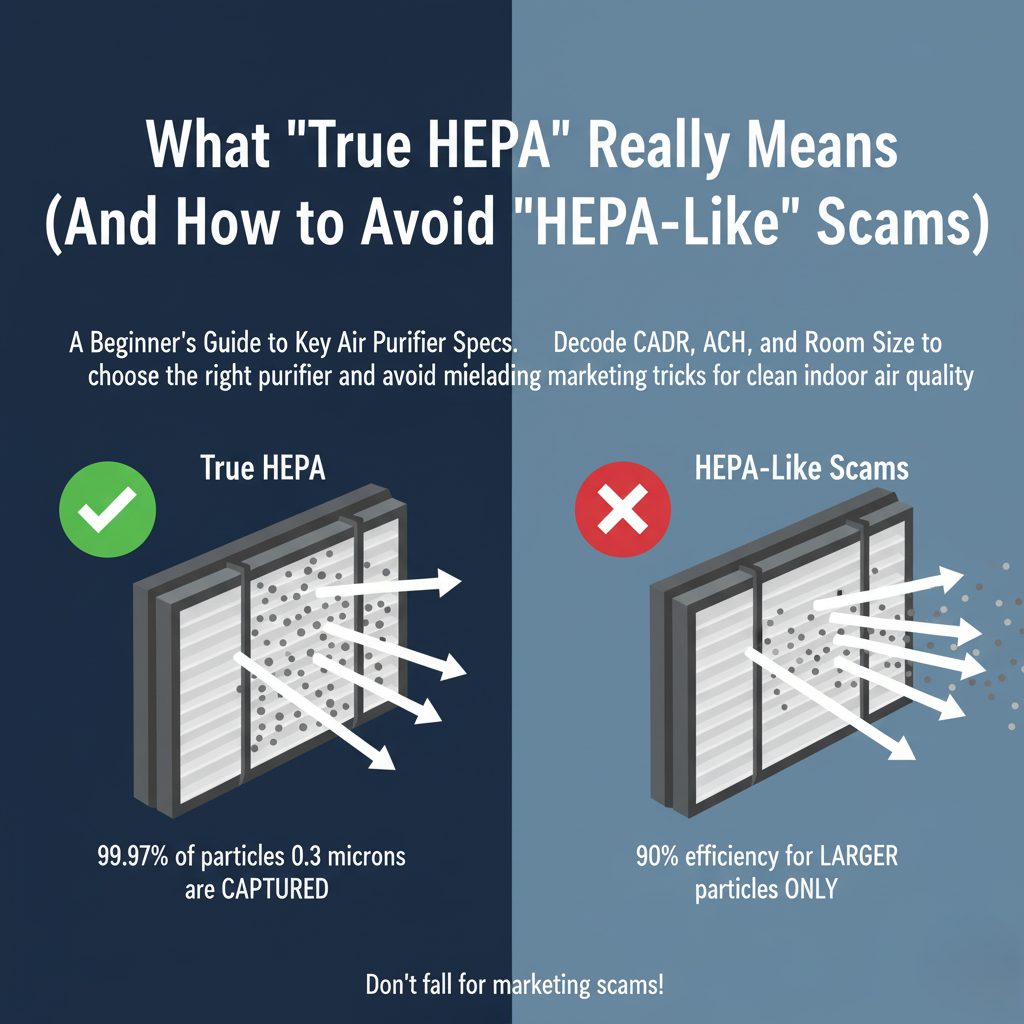Have you ever seen an air purifier advertised with "HEPA filtration" and thought, "Great, that's what I need!"? You're not alone. The term "HEPA" has become synonymous with clean air, but not all HEPA claims are created equal. In fact, many can be downright misleading.
Today, we're going to demystify the HEPA standard, explain what "True HEPA" truly guarantees, and arm you with the knowledge to avoid common "HEPA-like" scams.
What is a HEPA Filter, Anyway?
HEPA stands for High-Efficiency Particulate Air. It's not a brand name; it's a standard for air filtration efficiency. Originally developed during World War II to prevent the spread of airborne radioactive contaminants, HEPA filters have since become the gold standard for removing microscopic particles from the air.
The magic of a HEPA filter lies in its dense mat of randomly arranged fibers. Unlike a simple sieve, these filters don't just block particles larger than their pores. They use a clever combination of three mechanisms:
Interception: Particles follow the air flow, come within one fiber radius, and stick to the fiber.
Impaction: Larger, heavier particles can't navigate the winding paths and impact directly into the fibers.
Diffusion: Tiny, ultrafine particles move erratically (Brownian motion) and are more likely to collide with and stick to the fibers.
The "True HEPA" Guarantee: The Gold Standard
For a filter to be certified as "True HEPA" (sometimes called "Absolute HEPA" or meeting the EN 1822 H13/H14 standard in Europe), it must meet a very specific standard set by the U.S. Department of Energy (DOE).
This standard dictates that the filter must be capable of removing 99.97% of airborne particles that are 0.3 microns in diameter.
Why 0.3 microns? This specific size, known as the Most Penetrating Particle Size (MPPS), is the hardest particle size for filters to capture. Particles larger or smaller than 0.3 microns are actually easier for a HEPA filter to trap due to the impaction and diffusion mechanisms. So, if a filter can catch 99.97% of these tricky particles, it can certainly catch even more of everything else!
What does 0.3 microns capture? This includes:
Pollen
Dust mites
Pet dander
Mold spores
Many types of bacteria
Many virus-carrying droplets
Larger smoke particles
Beware the "HEPA-Like" or "HEPA-Type" Trap
Here's where the scams come in. Many manufacturers use terms like "HEPA-like," "HEPA-type," "99% HEPA," or simply "HEPA filter" without the crucial "True" designation.
These filters often look similar to True HEPA filters, but they don't meet the rigorous 99.97% at 0.3-micron standard. They might:
Filter at a lower efficiency (e.g., 90% or 95%).
Filter only larger particles, failing to capture the problematic 0.3-micron size effectively.
Not be independently tested to verify their claims.
Why is this a problem? If you're buying an air purifier specifically for allergies, asthma, or general indoor air quality, a filter that only captures 90% of irritants is leaving 10% circulating in your air. Over time, that makes a significant difference in your health and comfort.
How to Ensure You're Getting "True HEPA" Filtration:
When shopping for an air purifier or replacement filters, look for these indicators:
Explicitly Stated "True HEPA": The product description or packaging should clearly say "True HEPA," "Absolute HEPA," or "meets HEPA H13/H14 standard."
Efficiency Rating: Look for the "99.97% at 0.3 microns" specification. If it's missing or says something vague like "filters up to 99%," be wary.
Certifications: Some reputable brands will have third-party certifications (e.g., from AHAM or relevant allergy foundations) that verify filter performance.
Brand Reputation: Stick with established brands known for quality air purification.
Don't let clever marketing terms fool you. Your health and the air you breathe are too important.
Conclusion
Understanding the difference between "True HEPA" and its less effective imitations is crucial for making an informed decision about your indoor air quality. By knowing what to look for, you can ensure you're investing in genuine, high-efficiency filtration that truly protects you and your family from common airborne pollutants.





